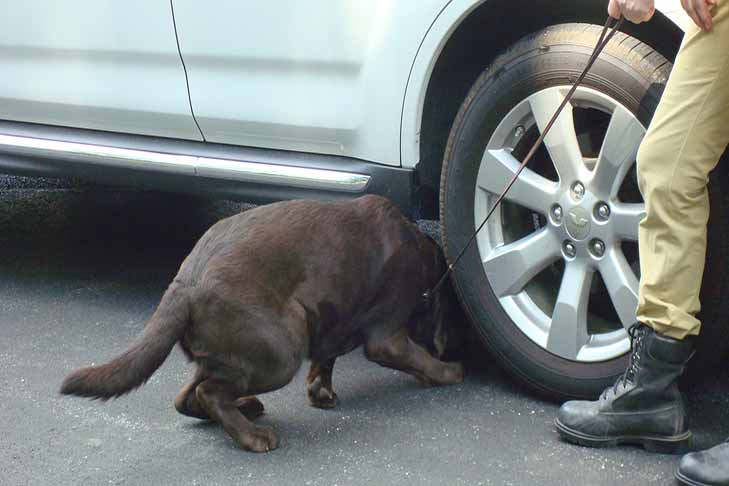
Breeders have a lot to observe when they have a new litter: health, structure, and temperament. And Labrador Retriever breeder Debby Kay keeps close tabs on another factor she considers crucial — how the pups use their noses.
Kay has been a pioneer in scent-detection work for more than 40 years. Many of her Chilbrook Labs go on to become working dogs that seek out explosives, narcotics, or missing people. The West Virginia resident has been fascinated with dogs’ amazing sense of smell since she was a young girl.
“I grew up with hunting hounds, and scent work has always been part of the work I have done with dogs,” Kay said. “It’s how dogs live, and I never grow tired of trying to learn how they sense the world and figure out ways they can help us in ours, using that sense of smell.”
Kay’s efforts at producing dogs that can successfully perform detection work are becoming even more important today. As acts of homegrown terrorism and mass shootings become everyday news in the United States, government agencies, schools, malls, and theaters are seeking the services of bomb dogs — but they have one major problem: there aren’t enough dogs to serve the growing need.
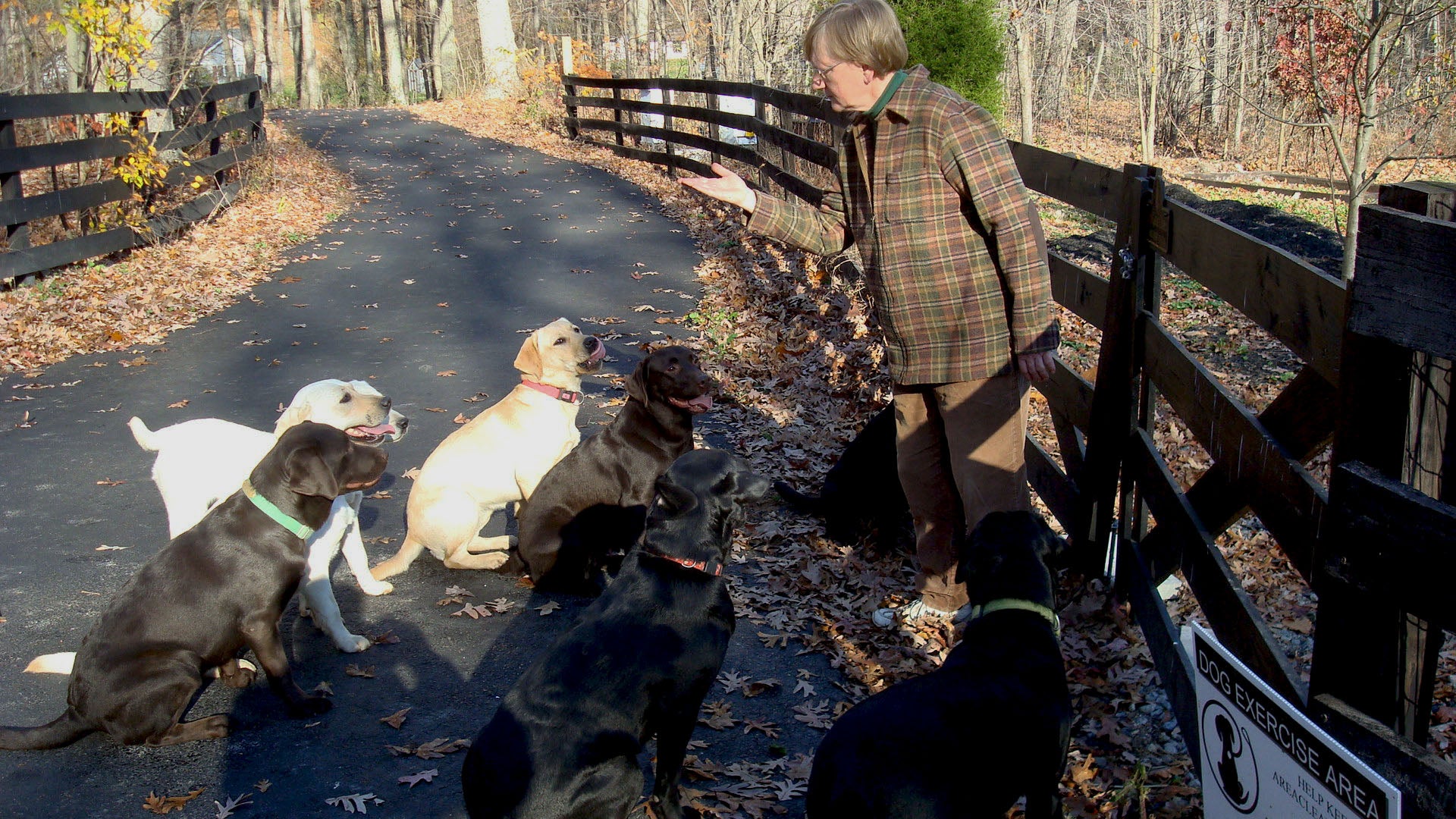
Kay with her dogs.
The U.S. imports about 80-to-90 percent of its working dogs from Europe, which has a rich heritage for breeding and training dogs for police/military-style competitions and certifications. German Shepherd Dogs (GSD) and Belgian Malinois remain law enforcement’s most popular choice for patrol dogs, and many are dual-purpose canines that also perform detection work.
But the breeds in greater demand for public detection work are sporting dogs, including Labrador Retrievers, Golden Retrievers, German Shorthaired Pointers, German Wirehaired Pointers, and Vizslas. These breeds are less intimidating to the public, and their incredible hunting instinct is easily transferred to searching for explosives.
Sporting dogs are popular in America, with Labradors ranked as the number one breed registered with the American Kennel Club (AKC), but the U.S. government has imported them from Europe, along with the traditional patrol-type breeds like GSDs. Due to growing terrorism threats and consequent demand for working dogs within Europe and around the world, there is now a shortage of foreign dogs available to protect the U.S.
“The irony is that, as a nation, we do not typically outsource the production of resources needed for national security. It is even more difficult to accept the fact that, as a nation, we cannot meet our own needs for working dogs when we have so many breeders and dogs within our borders,” said Scott Thomas, former breeding program manager of the Transportation Security Administration (TSA) Canine Breeding and Development Center.
The TSA’s Labrador Retriever detection dog breeding program was eliminated in 2012 as a result of budget cuts. This spurred Thomas to write to the AKC and ask for support in encouraging a domestic breeding program that would reduce the need to rely on foreign sources for national protection.
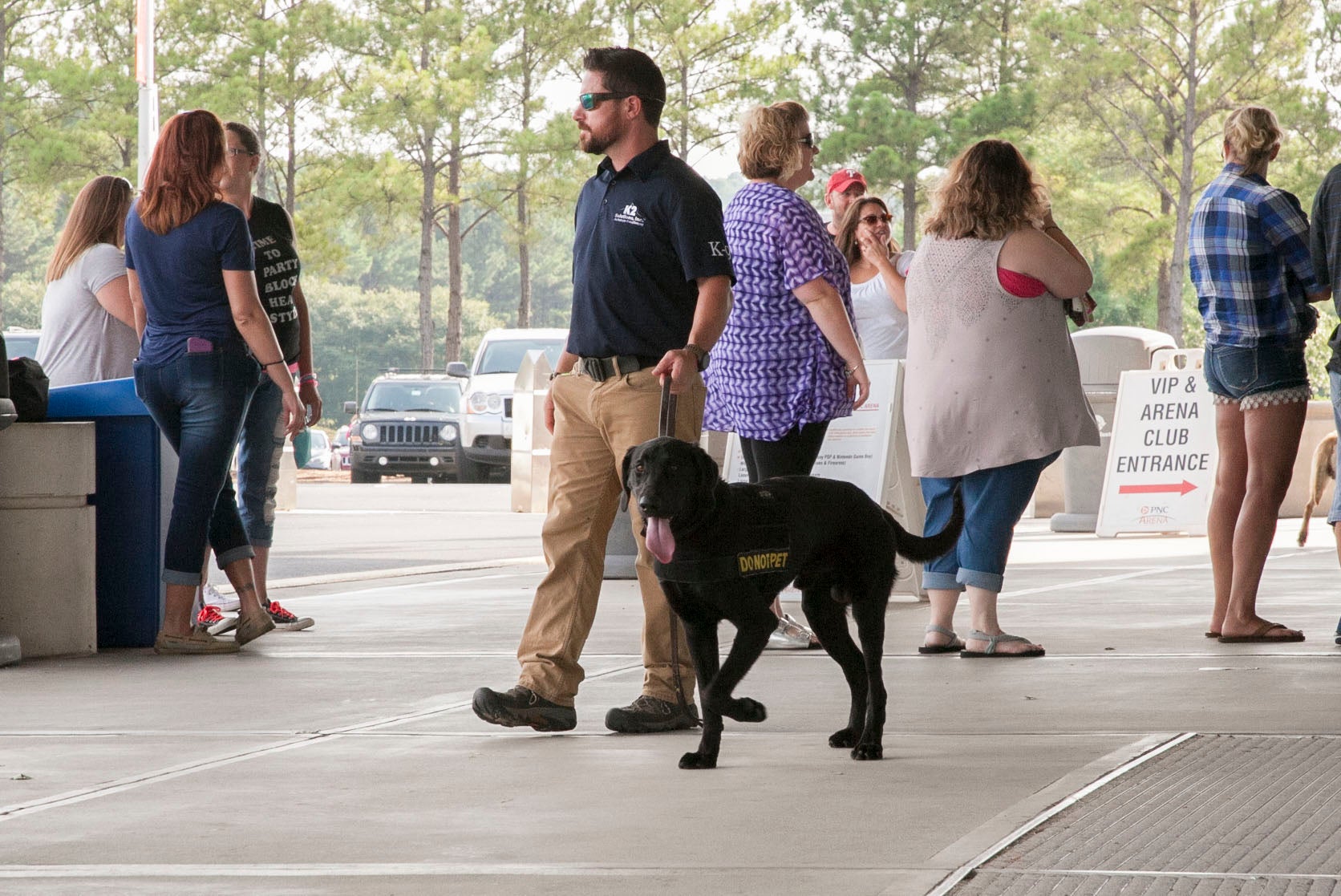
AKC Board Member Dr. Carmen Battaglia, a longtime German Shepherd Dog fancier, has been fascinated since he was a child with the amazing contributions that his breed has made to the military. When he became president of the German Shepherd Dog Club of America in the early 1990s, he organized a trip for the club’s board to the Department of Defense Dog Center at Lackland Air Force Base (AFB) in San Antonio, Texas.
This began a longtime relationship between Battaglia and the military dog team, resulting in many trips to Lackland and with Battaglia being named an advisor to the TSA’s canine program. When Battaglia received the letter from Thomas regarding help with a U.S. breeding program, he took the matter to the AKC Board of Directors, which formed the AKC Detection Dog Feasibility Study Committee to document the current state of detection dogs’ use in the U.S., and explore how to increase the domestic supply of this crucial national resource.
“AKC has always been a leader in purpose-bred, purebred dogs. And these purpose-bred, purebred dogs have the skills, ability, and breeding to produce the traits needed for detection dogs to successfully do their important jobs,” Battaglia said. “It is a natural role for AKC to assist in meeting this national need to protect our country.“
The AKC committee, headed by AKC Senior Vice President Mark Dunn, interviewed key stakeholders involved in bomb detection, including people from academia, government, the military, policing, training, and breeding. Subsequently, the AKC has launched several initiatives focused on government relations, networking/education, and breeder outreach.
Government Relations – There are many obstacles that stand in the way of U.S. breeders being able to easily sell dogs to the government for detection work, including the low market prices for top-working, field-line puppies and complicated government vendor contracts that make it difficult for individual breeders.
The government has stated that European dogs are less expensive to buy than U.S. dogs, but this does not include these additional costs: expenses incurred by the procurement team for up to six weeks of travel, shipping, health screenings, and other veterinarian costs, as well as training in Europe and in the U.S.
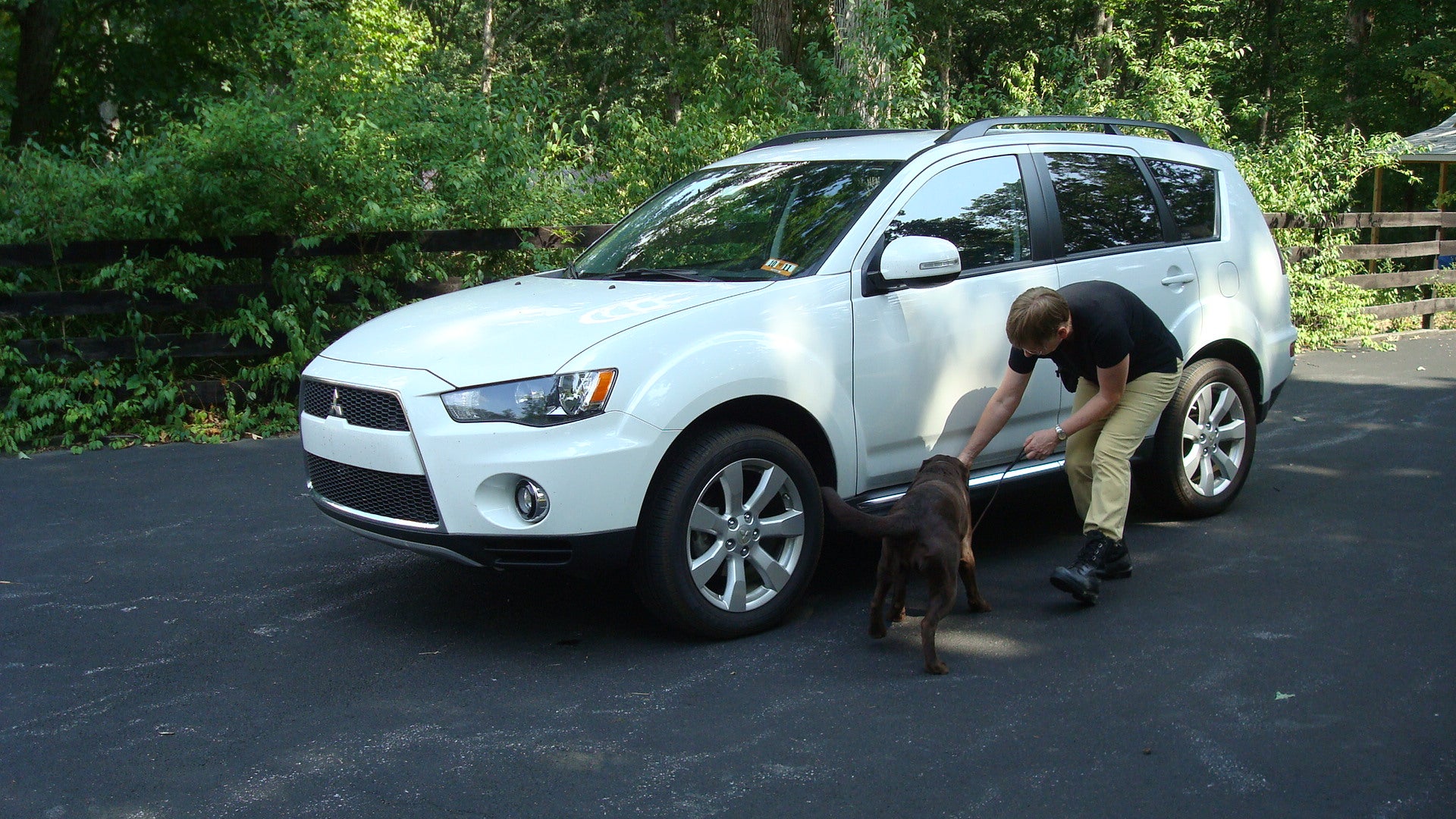
In addition, most legislators are unaware of the U.S.’s dependence on foreign dogs and the fact that it is becoming increasingly more difficult to meet the U.S.’s needs through foreign sources. The AKC Government Relations team, led by Vice President Sheila Goffe, has made strides in bringing these issues to the attention of lawmakers.
AKC Government Relations provided recommendations in the 2018 National Defense Authorization Act (H.R. 2810) to support using and developing additional sources for high-quality, domestically bred working dogs. HR 2810 also requires the Department of Defense to provide reports on specific aspects of military working dog evaluation, procurement, and breeding programs. This includes comparative costs of foreign versus domestically bred dogs, availability of domestically bred dogs, and nonclassified requirements for “green” (minimally trained) dogs. HR 2810 has passed the U.S. House of Representatives, and as of this article’s publication date, is under consideration in the conference.
Goffe was also invited to testify on the issue before a Senate committee in October 2017, where she expressed the dire need for these dogs to protect the country.
“Experts recognize that there is no better or more efficient way to detect explosives than through the use of high-quality, specially trained scent-detector dogs. Since the terrorist attacks on 9/11, and subsequent attacks worldwide, global demand for high-quality, explosives-detection dogs has skyrocketed,” Goffe said. “A shortage of appropriate, domestically bred dogs available for work as explosive detection dogs presents a significant threat to U.S. security.”
Networking/Education – The first AKC U.S. Detection Dog Conference took place in early 2017 to start a conversation about increasing the domestic supply of detection candidates. The stakeholders and speakers included members of government, academia, and private training/breeding facilities.
In addition, the AKC committee members have conducted research to talk to experts about the issue and needs, including visits to Lackland AFB, Auburn University College of Veterinary Medicine’s Canine Performance Sciences program, and the University of Pennsylvania’s Penn Vet Working Dog Center.
Breeder Outreach – AKC works with thousands of breeders around the country, but most are unaware of the detection dog shortage. The AKC Feasibility Study committee is taking steps to communicate the need to breeders through presentations to kennel clubs and parent clubs and in AKC newsletters and magazines.
Breeding the Right Stuff
The most successful detection dogs are developed from field and working lines are known to produce dogs that can work all day without losing interest or energy.
“I look for drive, detection ability, tractability, and intelligence,” said Lane Kjellsen, an AKC Field Trial judge and CEO of K2 Solutions, a detection dog training school in North Carolina. “The field-line dogs have been bred for a long time, with a purpose to work.”
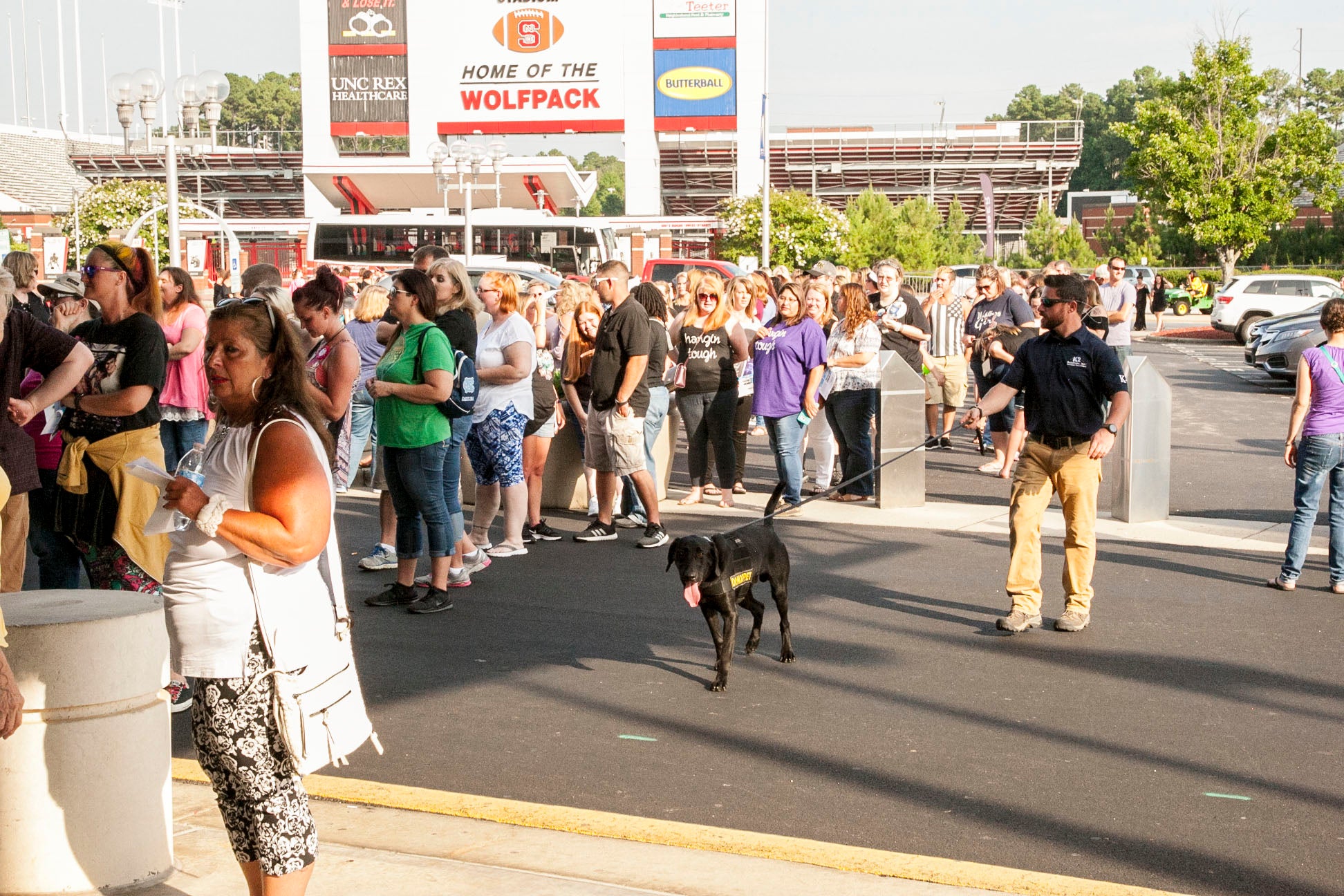
Chilbrook Labs breeder, Kay, said putting together her unique style of Labrador that can compete in the conformation ring and excel at detection work and dog sports took years of research. She studied under mentors in the U.S. and England and used the Seeing Eye breeding program as a model for her line. She donated many puppies to Seeing Eye, and the majority passed the training and became guide dogs.
“The idea was to have a dog that was moderate in build, balanced overall, sound in movement, with the character of the original water dogs that are behind the Labrador breed,” Kay said. “They were tough dogs that never complained, just did the job, and were dependable, loyal, and very clever. They seemingly lived forever and were just the best dogs to have around for companionship, too.”
She not only learned the best lines to seek out for her goals but also had access to monitor the track records of her puppies. “By working with groups like the Seeing Eye, I could keep track of both health and training records of the offspring of my early generations, which helped to tighten up the bloodlines by eliminating any potential weaknesses before they established themselves in the bloodline,” she said.
When the U.S. government receives a detection dog candidate, that dog must pass a stringent health examination, including being appraised with hip, elbow, and lumbar radiographs, and must then undergo an evaluation for these key traits:
- Sociability – Dogs must be sociable enough to be easily handled by people and be at ease around people of all types, but should not be so sociable that they are distracted by the presence of people.
- Environmental Stability – Dogs must not show fear or nervousness around loud and/or strange noises; they must show physical rigor, whether working in very hot or cold temperatures; and they must be bold and willing to walk/climb on strange surfaces.
- Desire to Obtain Reward – The dog’s drive to obtain its reward is the key to the dog working. Detection dogs are trained on toys, such as Kongs or tennis balls. The dogs must want that toy more than anything. Food is not used as a reward on the job, as it is difficult for handlers to carry, and there is too much food in the environment that could confuse the dog.
- Hunting Ability – The dogs must show intense drive to keep hunting, even when they are not finding anything, without getting frustrated and without giving false alerts.
The U.S. government and most detection dog training programs want to purchase puppies at about one year of age, so they are ready to move into advanced training. But this can be difficult, as not all breeders are willing or able to keep a puppy for several months. Therefore, some training centers have started puppy programs, so they can accept younger dogs.
K2 Solutions has started purchasing puppies as young as eight weeks, as well as breeding some of its own dogs “because there is such a demand for these dogs, and the supply of good dogs is not there,” said Tracy Campbell, former K9 Team Supervisor at the Fayetteville (N.C.) Police Department and chief trainer at K2 Solutions. “We are hoping that proper breeding, proper nurturing, and training them as puppies will make them really good working dogs. “
Even with the best of pedigrees, potential detection dogs also need early socialization and foundation training to succeed. This includes being exposed to a variety of people, places, and noises, and learning to walk on a variety of surfaces.
“It’s all in the breeding, but all puppies benefit from early stimulation, training, playing to build confidence, and introduction to odor recognition from an early age,” Kay said.
AKC staff member Penny Leigh is the project manager of the AKC Detection Dog Task Force. For more information on the project or the AKC U.S. Detection Dog Conference, contact her at pxl@akc.org.

